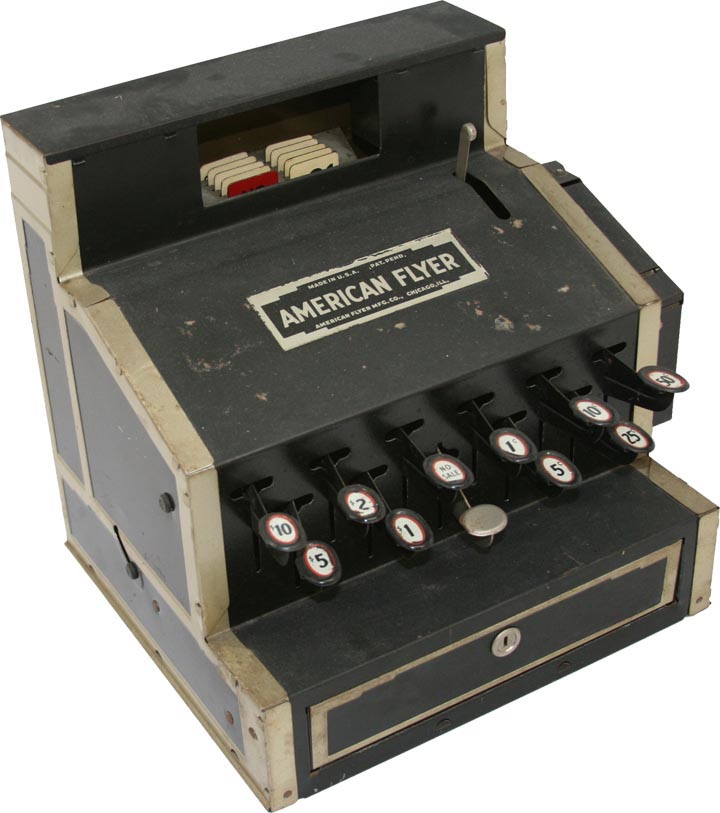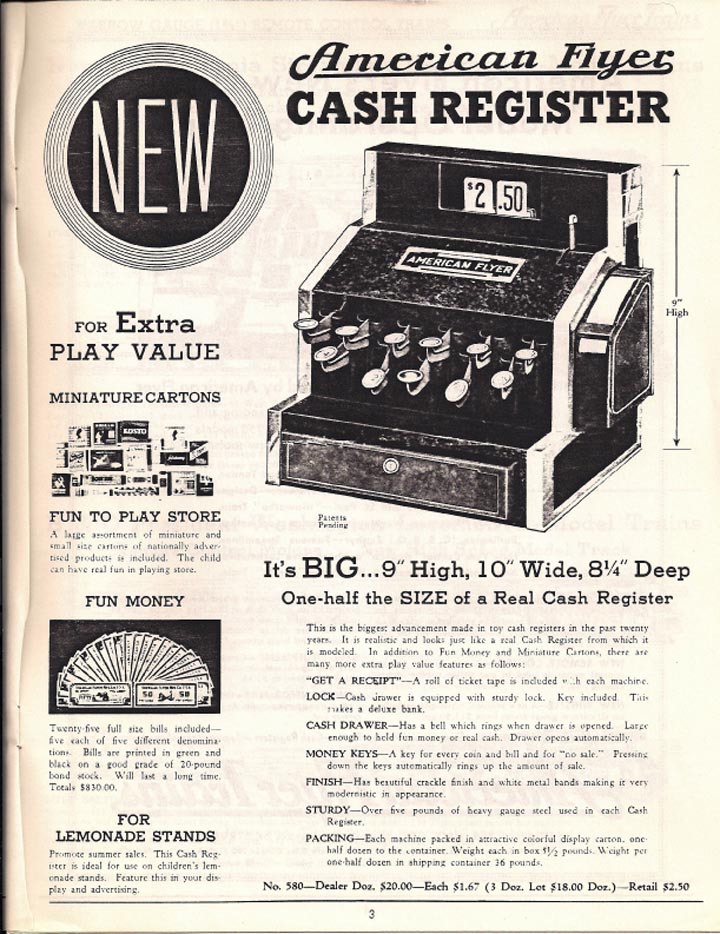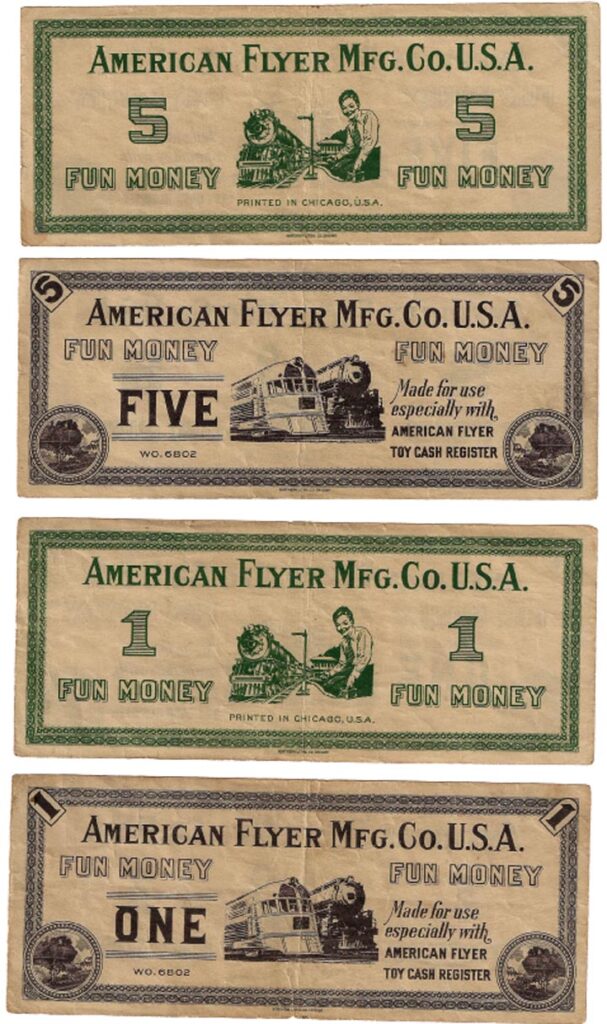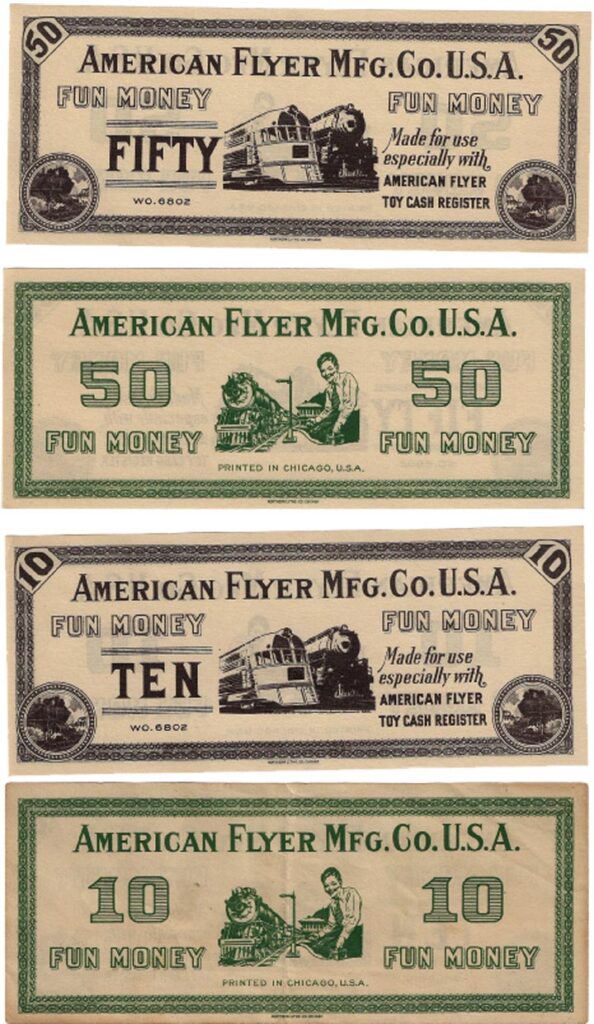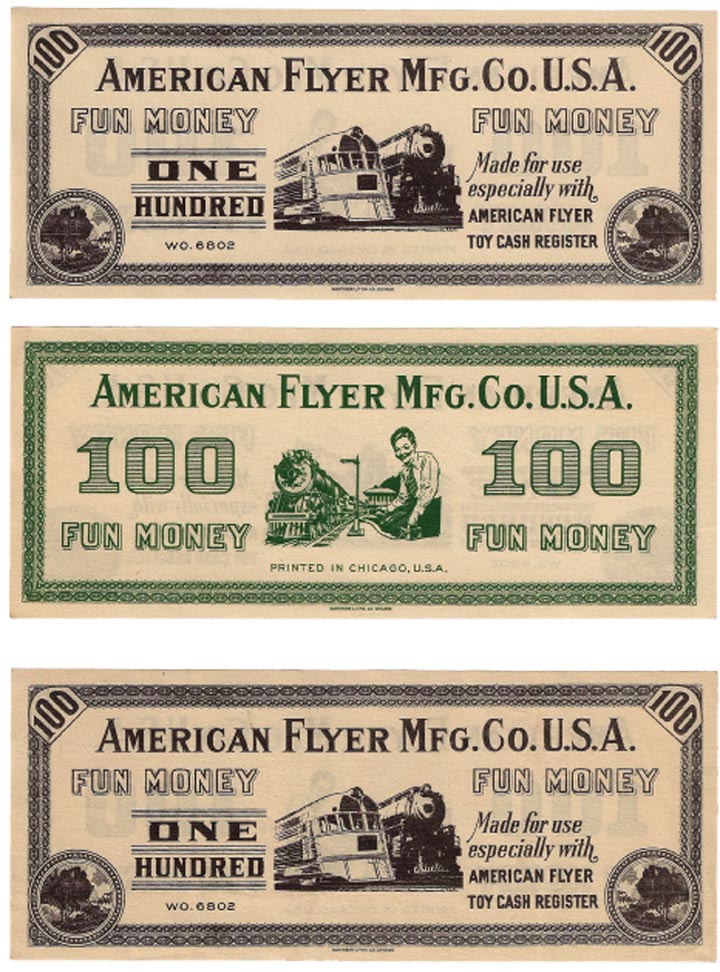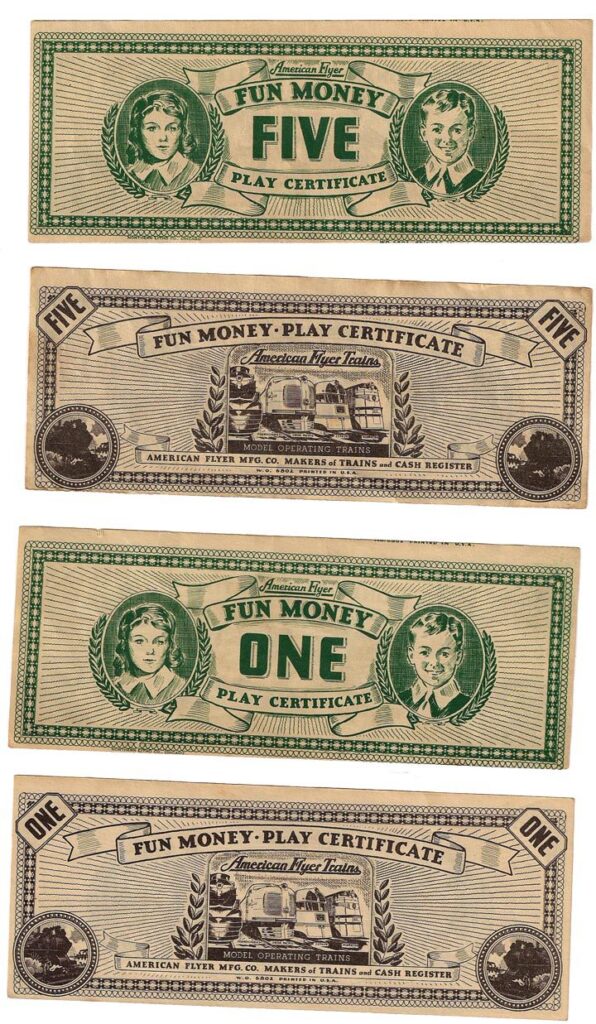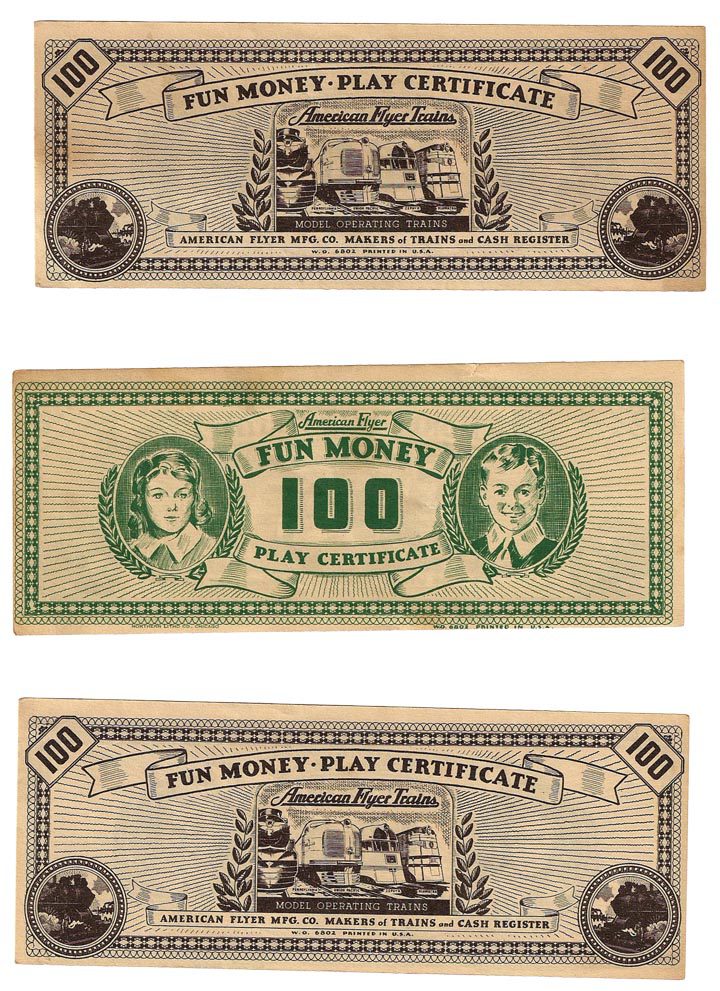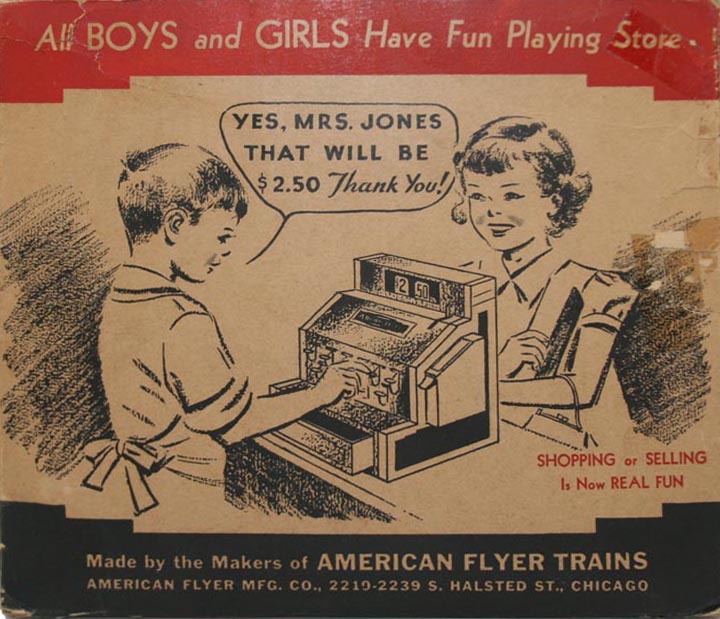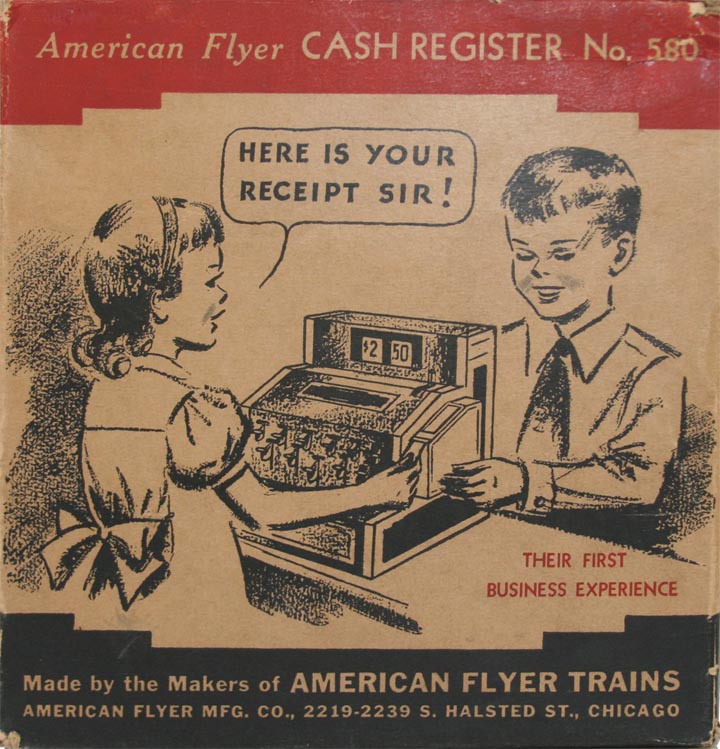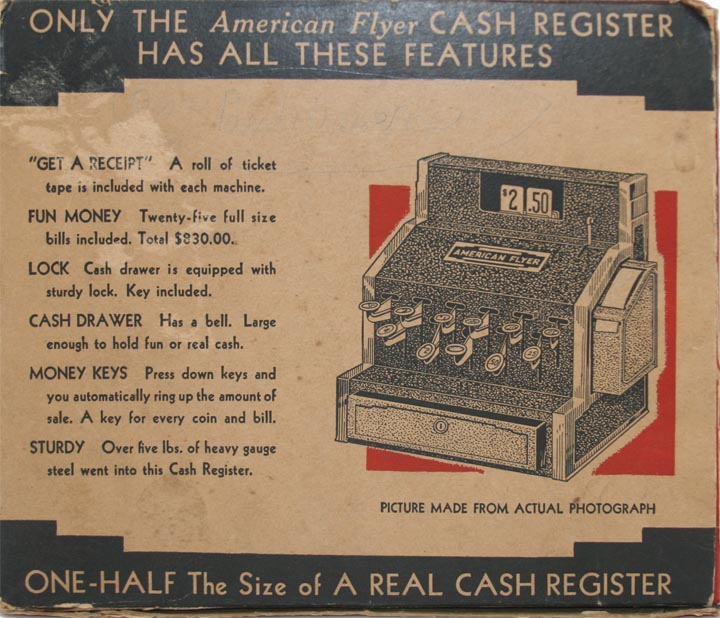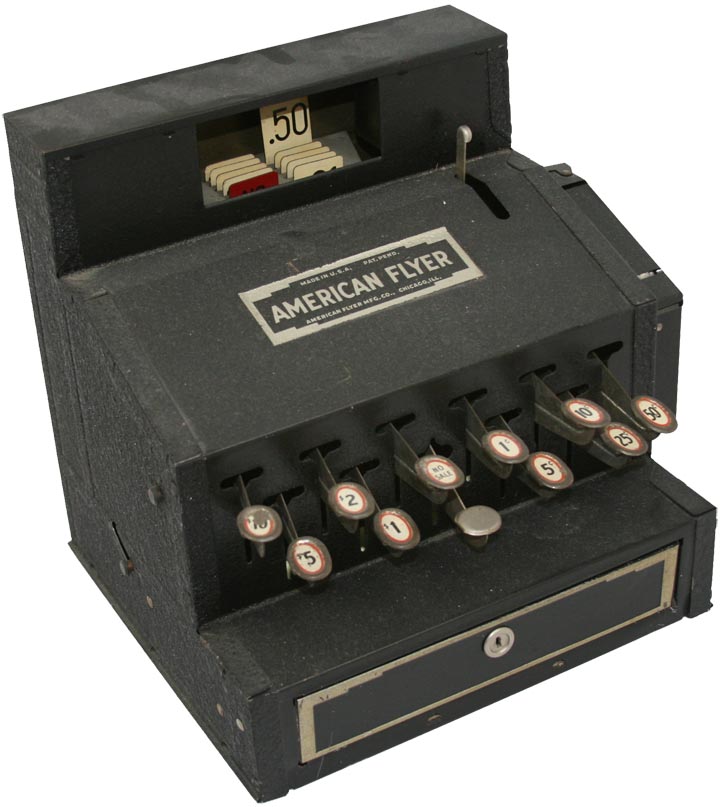American Flyer Cash Register #580
By Leon Sweet
Following the lead of their toy typewriter’s success which had been added to the American Flyer line in 1933, a toy cash register was introduced in 1936. The cash register is prominently featured on Page 3 of the June 1, 1936 dealer’s price list with the word “NEW” in a large circle. The dealers were able to purchase the item by the dozen for $20 or in a 3 dozen lot for $18 per dozen. The suggested retail price of the item was $2.50, which allowed for the dealer to make approximately $0.80 per item. In the 1937 price list, the prices to the dealers were down to $18 per dozen or $16.20 per 3 dozen and the suggested retail price was now $2.25.
The American Flyer cash register features a ringing bell, cash drawer with key/lock, and money keys with water decals indicating the dollar amount of the key. The cash registers came in a black crackle or smooth black enamel finish, with there being variations that have silver trim along the edges.
The cash register reportedly came with miniature cartons, so that it would be “fun to play store”. I have never seen any of the miniature cartons with an American Flyer cash register; however, considering that it has been over 70 years since these were introduced and that the majority of the cash registers found today are missing their original boxes, and cash, it is not surprising that these items have been lost to time.
The cash registers came with 25 bills of differing denominations, that total $830. There were 5 of each of the following bills, $1, $5, $10, $50, $100. There were no coins provided with the register; however, the individual keys do have denominations that are less than $1.
It is interesting to note that there are two different styles of American Flyer Fun Money. “Variation A”, which shows the Zephyr and a steam engine on the front of the bill and the scene from the front of the 1930 catalog on the back of the bill, is the most commonly seen variation of the fun money. These bills are the same size as US Currency and feature green and black printing. The fun money indicates that it was printed by Northern Litho Co. of Chicago and is identified as WO 6802 (work order 6802).
“Variation B”, shows the 1936 catalog cover scene on the front of the bill and a boy and girl on the back of the bill. This variation of fun money is not a full size bill (ie it is smaller than US Currency). Again the bills indicate that they were printed by Northern Litho Co. of Chicago and are identified as WO 6802.
My personal theory on the fun money is that “Variation A” was the first variation printed, due to it having the Zephyr prominently on the front and that “Variation B” was a limited run done near the end of the production of the item. All I know is that “Variation B” is difficult to find, as compared to “Variation A”.
If you want to see something interesting, look at the Variation A 10 and 50 photos. Compare the two $10 bills and then look at the $50s. One of the $10s shows normal playwear, but the other has never been played with. The $50s and $100s that I scanned have never been folded, wrinkled, stained, or played with. I got these off of eBay several years ago and when I received them I thought they were reproductions, but nobody ever reproduced them. Apparently, some of the money from the cash register got put away and was never used, and then separated from the toy. They are just incredible and the scans of these bills brings out the condition of them.
The cash register also came in a brightly colored display box. The boxes are quite difficult to find today.
In my years of collecting, I think I have seen 4 boxes, with two of those being partial boxes and all of them being in pieces.
The box shown, came to me taped together and it was quite a job to remove the tape and glue it back together.

